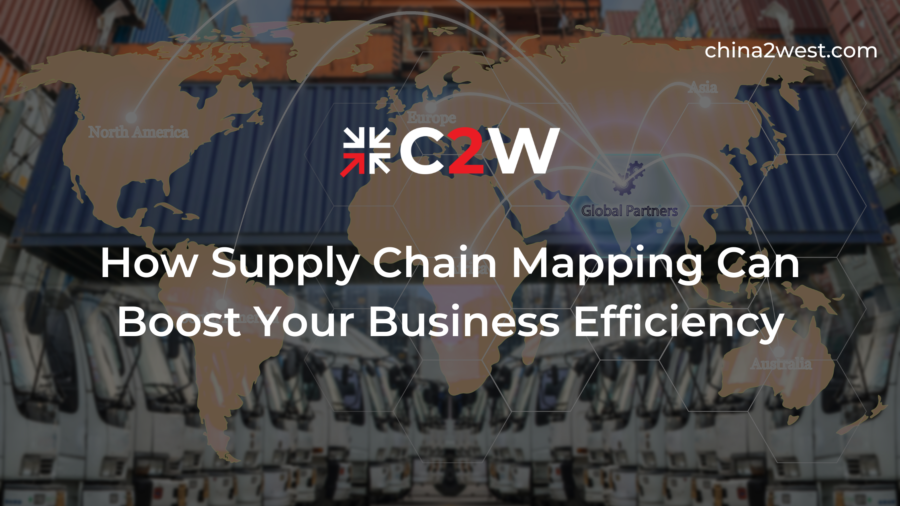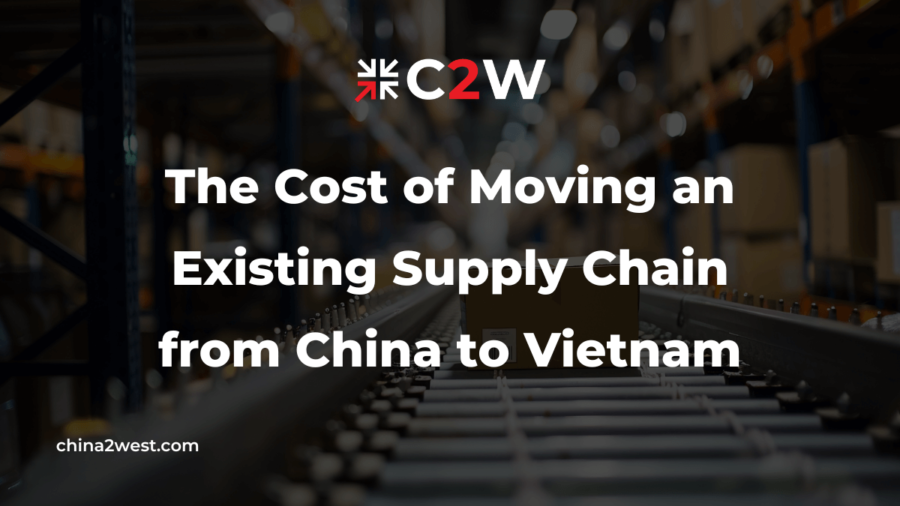In today’s rapidly evolving business landscape, optimizing efficiency has become increasingly crucial for companies to remain competitive and thrive in their respective industries.
One key strategy that businesses can employ to enhance their efficiency and streamline their operations is supply chain mapping.
By thoroughly understanding and visualizing the various components of their supply chain, companies can identify inefficiencies, mitigate risks, and ultimately drive business growth.
In this comprehensive guide, we will delve into the concept of supply chain mapping, its numerous benefits, and provide actionable insights on how businesses can effectively implement it to achieve greater efficiency.
Understanding Supply Chain Mapping
Supply chain mapping is a strategic process of visually representing the flow of products, information, and finances from the initial raw material stage to the final delivery to the end customer.
It involves identifying and documenting all the entities involved in the supply chain, including suppliers, manufacturers, distributors, retailers, and customers, and mapping out their relationships and interactions.
Components of Supply Chain Mapping
- Suppliers: Suppliers serve as the starting point of the supply chain, where raw materials or components are sourced to initiate the production process.
- Manufacturers: Manufacturers are responsible for transforming raw materials or components into finished products through various production processes.
- Distributors: Distributors play a crucial role in the supply chain by facilitating the movement of products from manufacturers to retailers or directly to customers, depending on the distribution model.
- Retailers: Retailers are businesses that sell products directly to consumers through various channels, including brick-and-mortar stores, e-commerce platforms, or third-party marketplaces.
- Customers: Customers are the end-users who purchase and consume the products or services offered by businesses within the supply chain.
Benefits of Supply Chain Mapping
Supply chain mapping offers numerous benefits for businesses seeking to enhance their efficiency and streamline their operations:
Visibility and Transparency
Supply chain mapping provides businesses with a comprehensive view of their entire supply chain network, enabling better visibility and transparency into the flow of goods, information, and finances.
This enhanced visibility allows companies to identify potential bottlenecks, inefficiencies, and areas for improvement across the supply chain.
Risk Identification and Mitigation
By mapping out their supply chain, businesses can identify potential risks and vulnerabilities, such as supplier dependencies, transportation bottlenecks, or geopolitical instability.
This proactive approach enables companies to develop contingency plans and mitigate risks effectively, reducing the likelihood of disruptions to their operations.
Cost Reduction
Supply chain mapping enables businesses to identify opportunities for cost savings and efficiency improvements throughout the supply chain.
By streamlining processes, optimizing inventory levels, and reducing unnecessary intermediaries, companies can minimize costs and improve their bottom line.
Improved Collaboration and Communication
Visualizing the supply chain enhances collaboration and communication among stakeholders, including suppliers, manufacturers, distributors, and retailers.
By clearly understanding each party’s role and responsibilities within the supply chain, businesses can foster stronger relationships, improve coordination, and enhance overall supply chain performance.
Implementing Supply Chain Mapping
Implementing supply chain mapping effectively requires a systematic approach and careful consideration of key steps:
Gather Data
The first step in supply chain mapping is to gather relevant data about the various components of the supply chain, including suppliers, transportation routes, inventory levels, lead times, and performance metrics.
This data can be collected from both internal sources, such as enterprise resource planning (ERP) systems, as well as external sources, including suppliers, logistics partners, and market research.
Map the Supply Chain
Once the data is collected, businesses can begin mapping out their supply chain using visualization tools such as flowcharts, diagrams, or specialized supply chain mapping software.
This involves identifying the flow of materials, information, and finances from suppliers to customers and documenting the relationships between different entities within the supply chain network.
Identify Pain Points
With the supply chain mapped out, businesses can analyze the data to identify potential pain points, bottlenecks, or inefficiencies that may be hindering operational performance.
This may include long lead times, excess inventory levels, unreliable suppliers, inefficient transportation routes, or poor communication between stakeholders.
Develop Action Plans
Based on the insights gained from supply chain mapping, businesses can develop actionable strategies and initiatives to address identified issues and improve efficiency.
This may involve renegotiating contracts with suppliers to improve terms and conditions, optimizing transportation routes to reduce transit times and costs, implementing inventory management systems to optimize stock levels, or diversifying sourcing strategies to mitigate supply chain risks.
Monitor and Adapt
Supply chain mapping is not a one-time exercise but an ongoing process that requires continuous monitoring and adaptation to changing market dynamics, customer demands, and internal capabilities.
Businesses should establish key performance indicators (KPIs) to track supply chain performance, regularly review and update their supply chain maps, and adapt their strategies as needed to optimize efficiency and drive continuous improvement.
Supply chain mapping is a powerful strategic tool that can significantly enhance business efficiency and competitiveness in today’s dynamic marketplace. Embracing supply chain mapping as a core business strategy can position companies for long-term resilience and profitability in an increasingly competitive business environment. That’s when you need professional supply chain solutions provider like C2W, leveraging their abundant industry experience and expansive network of suppliers. Contact us now!




